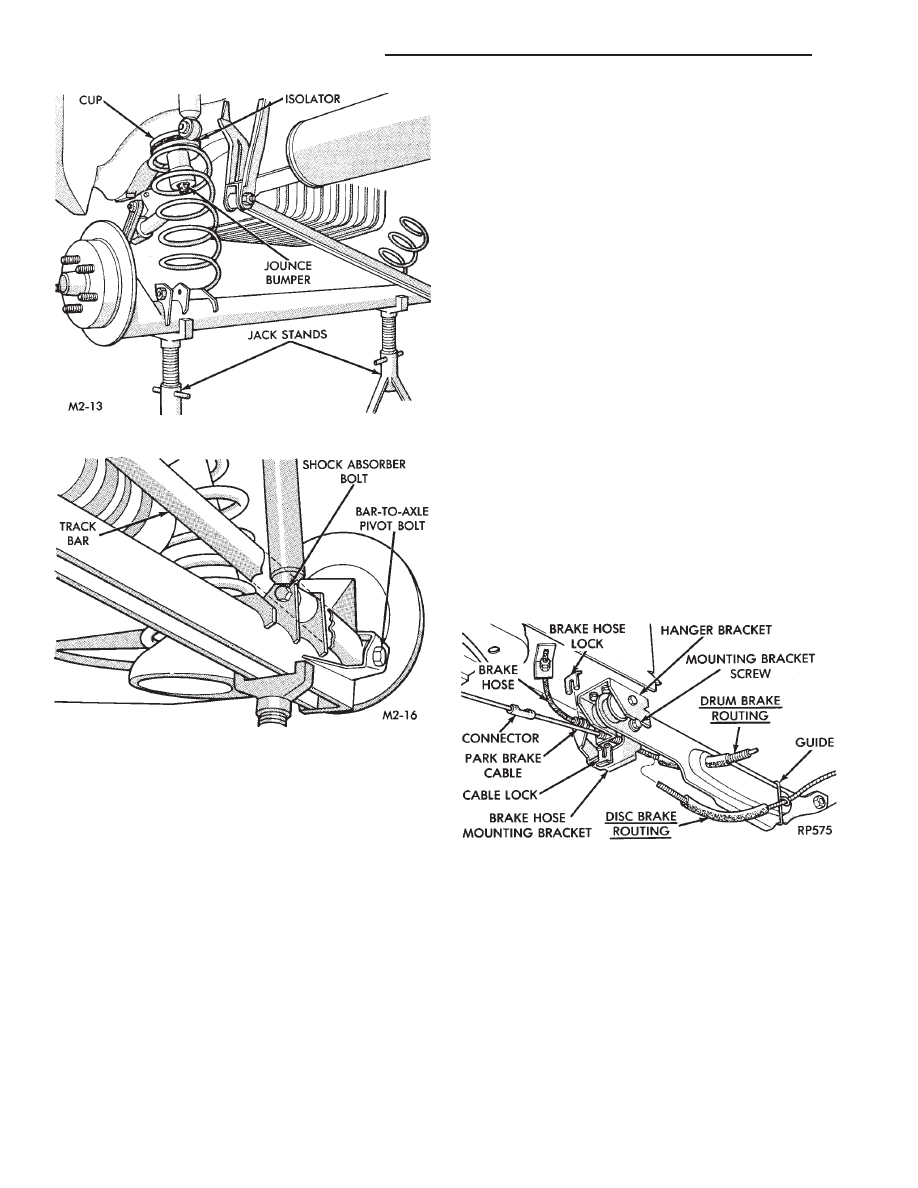Chrysler Le Baron, Dodge Dynasty, Plymouth Acclaim. Manual - part 90

(3) Install washer and nut. Tighten nut to 27-34
N
Im (240-300 in. lbs.) torque while rotating brake
drum. Then back off nut to completely release pre-
load. Finger tighten nut.
(4) Position nut lock with one pair of slots in-line
with cotter pin hole. Install cotter pin. Clean and in-
stall grease cap.
DISC BRAKE ASSEMBLY
(1) Position caliper support and spindle to axle. In-
stall the 4 spindle mounting bolts finger tight. Then
torque the 4 spindle mounting bolts to 75 N
Im (55 ft.
lbs.) torque.
(2) Install hub and bearings.
(3) Install washer and nut. Tighten to 27-34 N
Im
(240-300 in. lbs.) torque while rotating hub. Then
back off nut to completely release preload. Finger
tighten nut.
(4) Position nut lock with one pair of slots in-line
with cotter pin hole. Install cotter pin. Clean and in-
stall grease cap.
(5) Install braking disc and adapter. Install caliper
assembly (see Rear Disc Brake) in Brakes Section,
Group 5.
(6) Attach brake hose and parking brake cable to
caliper and suspension arm (Fig. 7). Install brake
hose mounting bracket to caliper support.
(7) Route park brake cable through hanger bracket
and lock housing end into bracket. Install cable end
into (intermediate) connector (Fig. 7).
(8) Install brake hose and fitting into bracket and
install lock. Attach brake tube assembly to hose fit-
ting and tighten to 16 N
Im (140 in. lbs.) torque (Fig.
7).
(9) Install wheel and tire assemblies and tighten
wheel stud nuts to 129 N
Im (95 ft. lbs.) torque. Re-
move jacks and lower vehicle.
(10) With suspension supporting vehicle, torque
lower shock absorber bolts to 61 N
Im (45 ft. lbs.).
Then torque track bar bolt to 95 N
Im (70 ft. lbs.).
(11) Bleed brake system. See BRAKES, Group 5.
Fig. 5 Install Springs and Isolators
Fig. 6 Install Shock Absorber and Track Bar
Fasteners (Bolts)
Fig. 7 Reconnect Brake Tube and Park Brake Cable
2 - 58
SUSPENSION AND DRIVESHAFTS
Ä